Blue and blue hydrangea: description and varieties, planting and care

It is very popular now to have a chic green area on a personal plot. It is like a piece of paradise and a reason for the pride of every owner. Amateur gardeners plant a huge variety of plants from around the world. The queen of the garden can be a fabulous one, with large spherical azure buds and an intoxicating scent of blue hydrangea (Hydrangea), which translates from Latin as "a vessel of water".

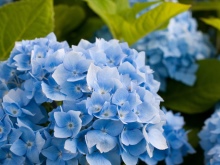
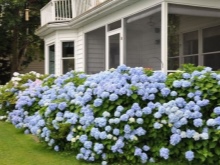
Peculiarities
Blue hydrangea is a garden shrub of the hydrangea family, which is a huge green bushes with spherical blue inflorescences. This color of the flower appeared due to acidic soils, which contain aluminum. The trunk of the plant accumulates this chemical element, and the flowering takes on a shade from blue to blue. Flowering begins in spring and lasts until the first frost.
The plant can be found in Asia, North America, Europe.
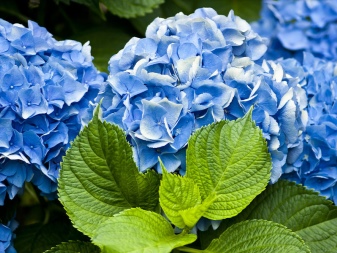
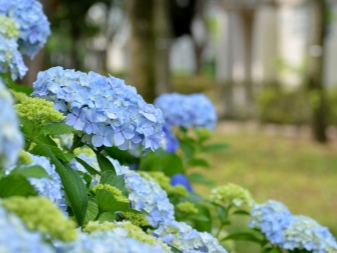
Types and varieties
Professional gardeners brought a huge number of new varieties of Hydrangea blue, the description of which will be considered in more detail.
- "Verena Blue" - a remontant variety, characterized by a compact bush. The plant is very adaptable to any planting site. Grows well in the shade and sun. Its hallmark is resistance to fungal infections. The height of the bush can be up to a meter. Bright green shoots. The flowering period is from mid-summer to early autumn. In winter and at the onset of the first frost, it is necessary to cover it, because if it freezes, it will not bloom so generously after that.
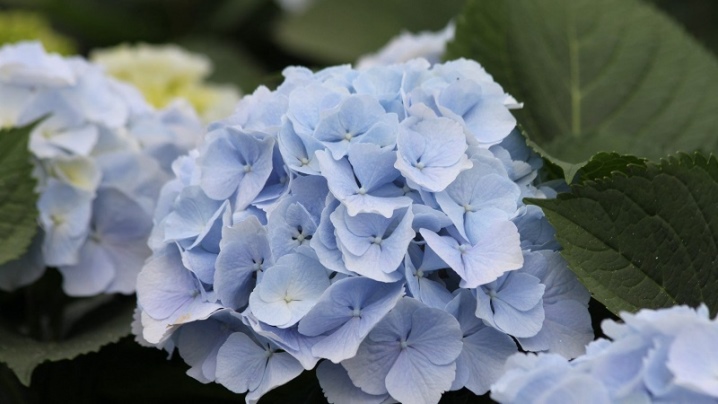
- "Nikko blue" - this type of hydrangea can reach a height of up to 1.5 meters. Flowering can change from white to blue, but in order to maintain a rich sky color, it is enough to maintain the acidity of the soil from 5.5-7.0 Ph. It constantly needs a warm, windward, frost-protected place. You can place it on your sunny windowsill and enjoy the bloom and delicate scent of the flower all summer long. Loves abundant watering and periodic spraying.
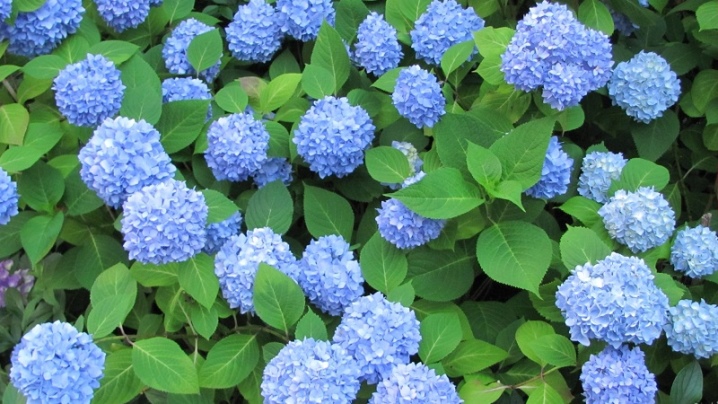
- Early blue - is famous for its powerful root system, which allows it to grow in pots or flowerpots. Even a plant growing in a small tub can please its owners on its small bush, which does not require a garter, with 5–6 buds blossoming at the same time. If the composition of the soil changes, then the color of the petals does not remain unchanged - it can become both flesh and light green. There is nothing easier than changing the color of the buds - you need to add alum to the soil or drive nails into the soil. Leaving it in the cold is not recommended; it must be brought to a warm or frost-free place. Thus, the ideal home for them is a winter and summer garden.
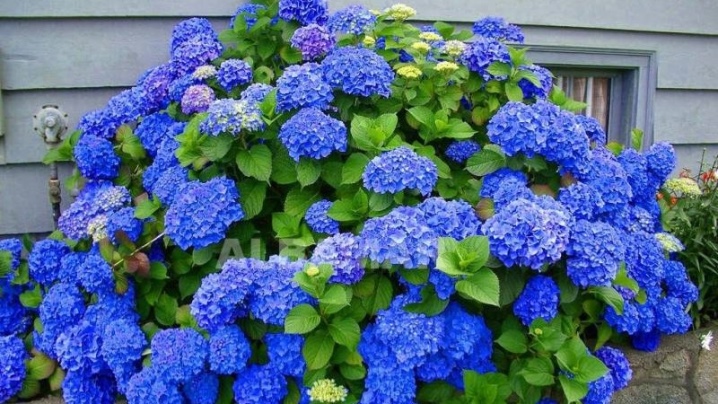
- Hydrangea macrophylla - large-leaved or garden. Very hygrophilous, bred in France. The leaves are large, oval in shape, turn red by autumn, the flower heads are large. Winter does not hibernate, loves a warm climate. In general, only the leaves are the property of this type, which makes the bush decorative throughout the season.
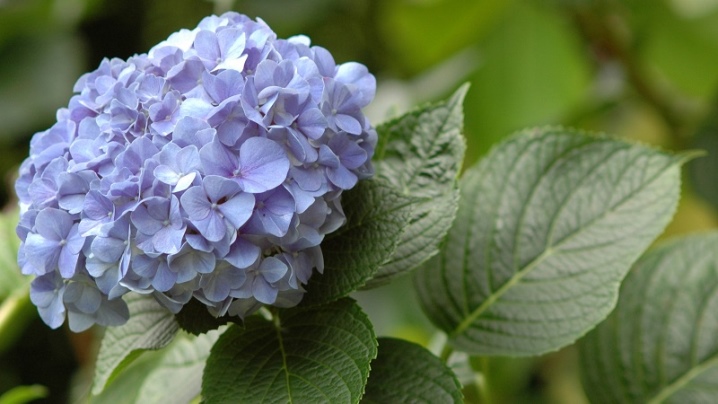
- Blue Wave is also called Blue Lagoon. Bred in Holland. Huge shrubs reaching a height of 1.5 meters, a strong stem and beautiful flowers. Luxurious, abundant, flat inflorescence blooms only on the shoots of the last year. Our winters cannot stand, so it is better to cover well, like roses. Loves partial shade, moist, humus soils.Blooms profusely from mid to late summer. Prefers feeding with sawdust or coffee grounds.
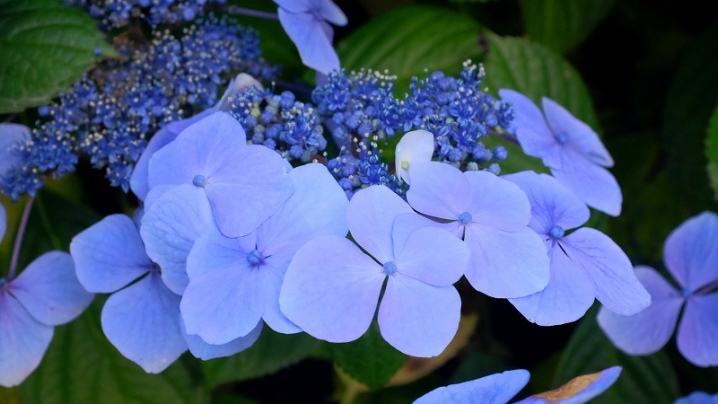
- "Romance blue" - gorgeous frost-hardy look with slowly opening double flowers of blue color. Blooms on new and last year shoots. The inflorescences are large, about 25 cm. Loves both light and partial shade. Strong and firm shoots with bright green leaves. Propagated by cuttings, which in the first year can bloom in July and August.
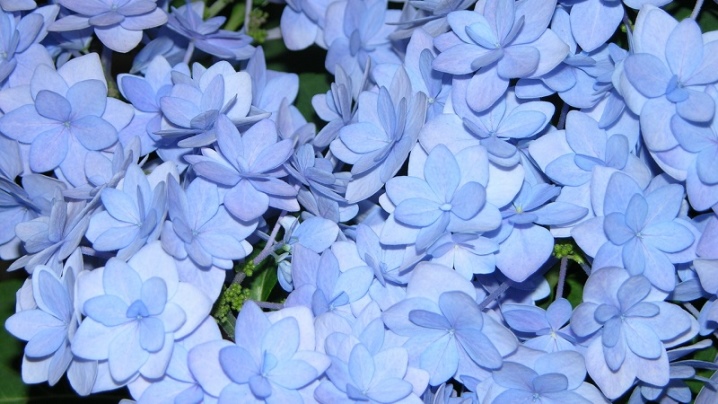
- Cabaret blue - from the beginning of flowering, the hydrangea is white-pink, but then the color begins to change and turns blue. The diameter of the inflorescence is about 15 cm. Shade-loving, from 90 to 120 cm high, loves abundant watering. Strong shoots are good for cutting. Blooms profusely from mid-summer to September.
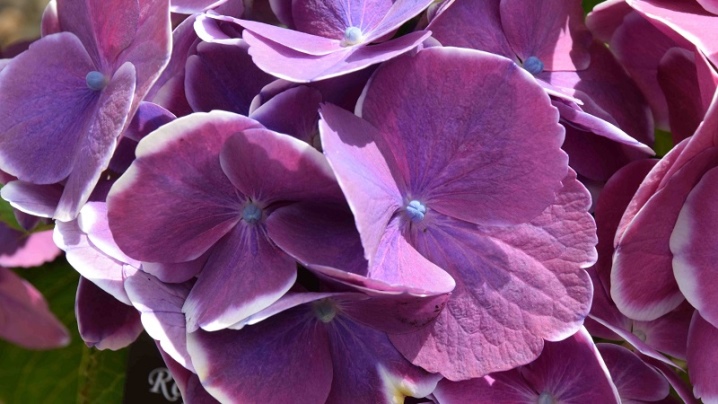
- "Kokin blue" - a shrub with erect shoots, loving partial shade. Compact bush up to 1.5 meters high. Egg-shaped leaves are bright green in color. Spherical flowers with a diameter of 20-25 cm. Grows very quickly. It is thermophilic, loves watering, does not like lime soil. Loves fed soil. It blooms from mid to late summer.
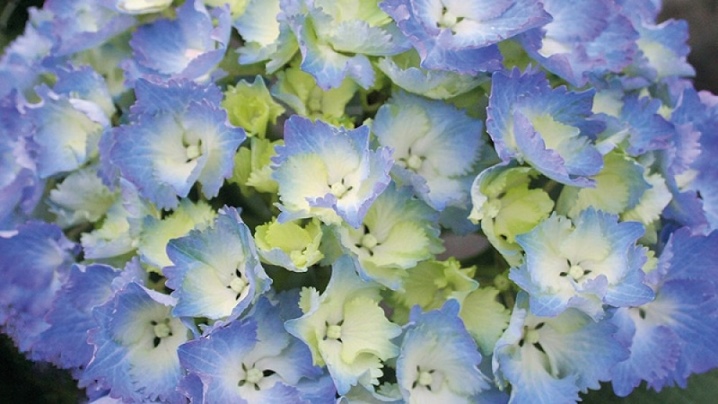
- Bodensee - a novelty. She came to us from New Zealand, where she was brought out. She has a powerful root system, frost-resistant. It grows well and lives up to 20 years. It blooms beautifully in a windy area. The bush reaches a height and width of 120 cm. A large-leaved species that blooms gorgeous with large inflorescences from the beginning of summer. Large blue spherical inflorescences are surrounded by receptacles with polished, ragged ends 10–12 cm in diameter and 8–15 cm wide. The raised stems have black or red stripes and specks.
The shiny, thick and crisp leaves resemble the shape of a heart. Look great all season.
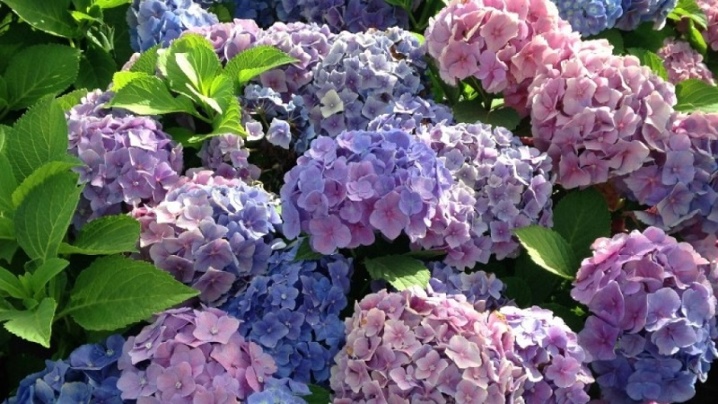
- Bluebird - has a neat bush up to 1.2 m high with huge bright green leaves. In autumn, the leaves change to purple or red. Flowers of bright blue color are collected in flat inflorescences up to 10 cm wide and framed with blue pistils. This beauty blooms all summer. Loves the sun and partial shade, abundant watering, drainage soil, fertilizers. Dislikes cold winter winds.
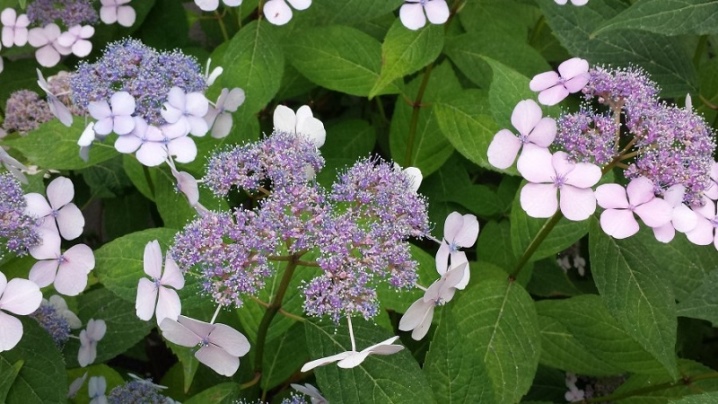
- Endless Summer Bloom Star - one of the varieties of hydrangea that blooms the longest - from May to August. The diameter of the bud is up to 18 cm. For its ability to bloom in a circle, it was called "Endless Summer". Not afraid of frost and accidental pruning. Shoots will bloom anyway, even if last year's wood is damaged. The greens are resistant to powdery mildew. Loves the morning sun and partial shade, moist and well-drained soil.
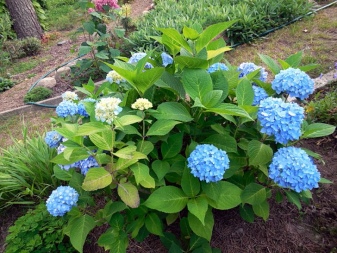
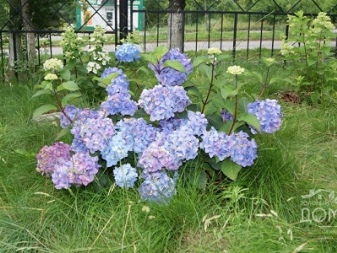
How to plant
In order for the plant to bloom well and not hurt, planting it requires special attention. It is necessary to choose the right time of the year - spring or autumn. In the spring, it is planted immediately after the snow melts into the warm ground. Spring planting will have a good effect on the root system and will allow you to get accustomed to the onset of cold weather. If the autumn is warm, then planting can begin in September, which will allow the hydrangea to grow stronger before the first frost. Open ground must be prepared: well drained and properly moistened. It should contain a lot of humus: 1 to 1 with earth, with the addition of sand and peat chips.
Choose a place without direct rays of the sun, you can half-shaded - it all depends on the variety. When all these measures are followed, you can prepare for planting. The hole should be 45 cm deep, width - depending on the size of the roots.
If the gardener wants a lush flowering, then it is necessary to plant in a row with a distance between the bushes of 60-70 cm, in a dug trench.
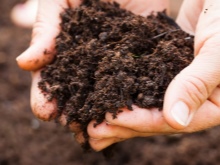
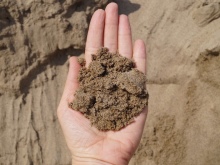
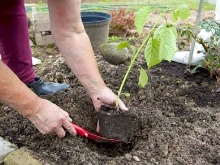
How to care for
Top dressing begins already with planting a plant. You can fertilize it with a mixture of potassium sulphide and superphosphate. In principle, in order for flowering to last longer, fertilizers should be applied little by little throughout the flowering season.
As for watering, it should be abundant, but without stagnant moisture. If there is not enough liquid, the plant will begin to dry out. You can water it 2 or 3 times a week, depending on the weather.The infection needs to be poured about 2 buckets per bush. The correct acidic environment in the soil will provide a beautiful blue color.
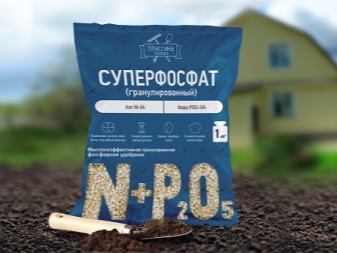
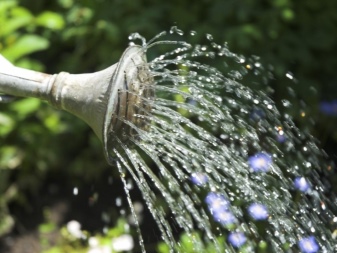
Growing indoors
Home hydrangea is more modest in size, but with good care it can reach a height of up to 1 m. It is not at all difficult to grow and care for it, but it is necessary to adhere to some rules.
This plant is very moisture-loving and should not be allowed to dry for a long time. In the summer, it is better to identify it in partial shade, but when the formation of buds begins, it is necessary to put the flower on a well-lit window, but without direct sunlight. The optimum air temperature should be + 18-23 degrees, the hydrangea does not like higher temperatures - leaves can fall off profusely. Does not tolerate drafts and sudden temperature changes. You can spray the leaves without restrictions or place a container of water next to the plant. In winter, it is in hibernation, so you need to water it so that the soil does not dry out. With the appearance of the first leaves in the spring, abundant watering is resumed.
Top dressing begins at the first budding 2 times a month.

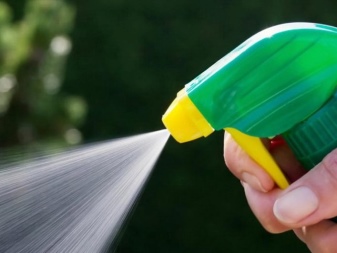
Reproduction methods
- Cuttings. With this choice of propagation, a correctly chosen cutting for cutting plays an important role. A stalk is a stem without leaves with 2 or 3 buds. It is better to cut them in the morning after watering. For this, the side parts from a young bush are suitable. The cut shoot must be placed in water in a dark place. After that, cut off the crown, shorten it to the third kidney and place it in any root stimulating agent. Next, you can plant cuttings by covering them with jars. You can water directly on them. After about a month, the leaves will appear, so the jars can be removed.
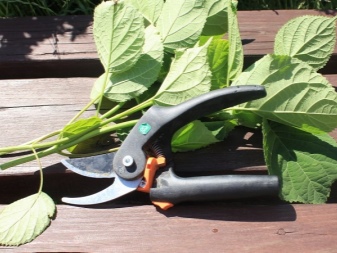
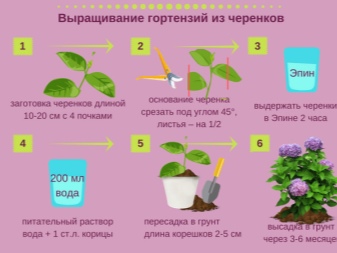
- By dividing the bush. This method of reproduction is used when they want to transplant the inflorescence to another place. Before digging, it must be well poured. Chip off the soil from the roots and carefully divide the root system into roots of any size. Any such part can be safely planted as an independent plant in the place you need.
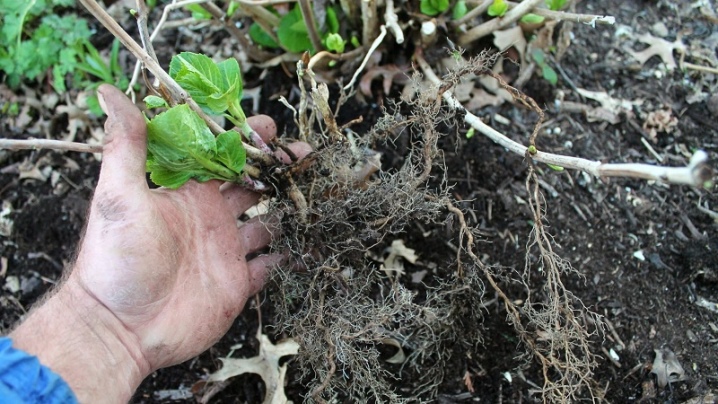
- Layers. The fastest and easiest way to reproduce. To do this, you need to take a side branch and dig it into the ground to a shallow depth, fix it. In August, new shoots should appear on them. In October, they can be separated from the main bush and dug into the ground for the winter. In spring, plant for growing. After a year, the teenager is ready for a permanent place of growth.
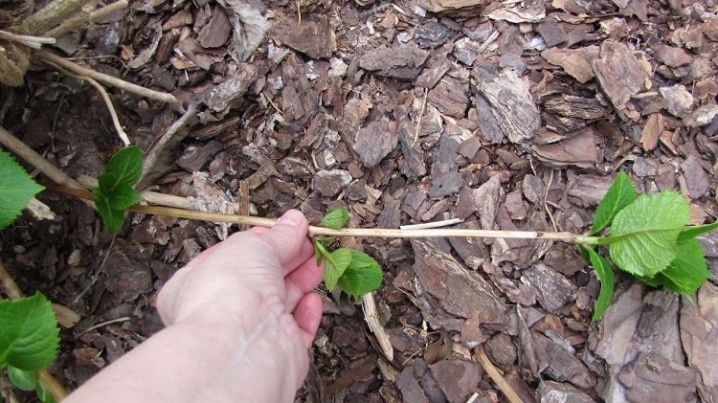
- Seeds. A very long and painstaking method that is not popular. Most hydrangea varieties are hybrid, and this method is not suitable for them. But if you have the patience to plant seedlings and grow them for a couple of years, then this method is for you. Spread the seeds over wet soil, press in and cover with foil or glass. Be sure to ventilate and drain off condensation.
The first shoots will appear in 3 weeks. You will have to wait 2 years until they reach a height of 30–40 cm.
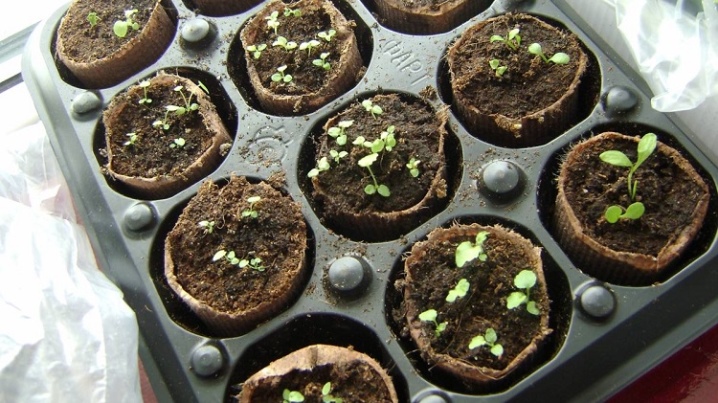
- Offspring. Small shoots grow near the main bush. They must be carefully dug up and planted in a separate bed for growing, and after strengthening, they can be planted in a new place.
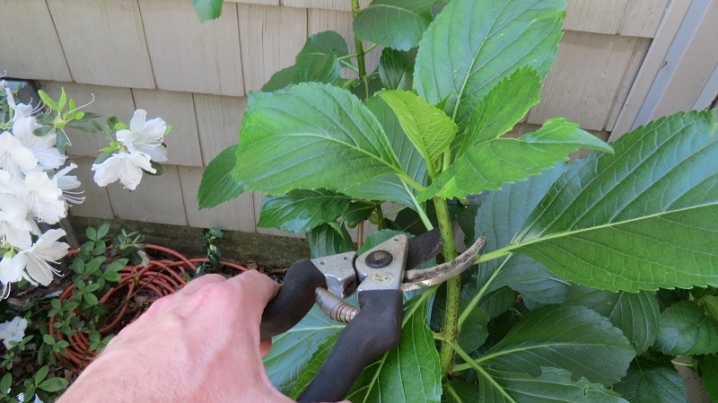
Diseases and pests
Improper care of the shrub can lead to some diseases and provoke the appearance of pests. If you do not take any action to eliminate the signs, the hydrangea may die.
- Young shoots are covered with brown spots, which means that gray rot has appeared. Without disinfection, the inflorescence will be covered with a gray bloom and die. To do this, you need to cut off the affected flowers, treat the bush with "Fundazol" or "Rovral", ensure normal watering and ventilation.
- Powdery mildew - a fungal disease that appears due to the abundant humidity in the air, affects the entire bush and does not allow it to grow further, it withers and dies. Infected shoots and flowers must be pruned and treated with a fungicide.
- With an excess of humus or lime in the ground, hydrangea greens can lose their color and become pale. This disease is called chlorosis. You can get rid of it by treating the shrub with copper sulfate or potassium nitrate.
- Hydrangea is a plant with strong immunity, but it can also be overcome by pests. This is the aphid. The disinfectant can be applied once a week until the pest is gone.
- Spider mite. It is indicated by the appearance of small yellow spots, from which a marble pattern is formed. If the temperature and humidity outside are high, then the greens will be wrapped in cobwebs in a week, will begin to dry out and fall. At the first sign of a tick, it is necessary to treat the plant with soapy water. If the pest has developed strongly, then the treatment must be carried out with stronger insecticides.
- Slugs. They are favorably bred in dense thickets of hydrangea, eat leaves. You can destroy them with the help of scattering the granular preparation "Molluscicide" on the soil.
- Rust - seen by a rusty coating on the foliage. The disease can appear due to a strong density or a large concentration of nitrogen in the soil. It can be treated by spraying with copper chloride.
- The most dangerous and incurable disease is ring spot. It can be identified by round spots with a diameter of 2 cm. The foliage wrinkles and falls off, the buds become loose and die. As a result, the shrub will not be able to lay its flowering, or it will be small and inconspicuous.
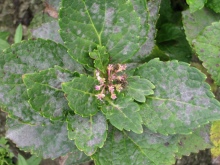
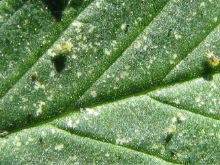

Examples in landscape design
- You can create the style of an old estate by planting a blue hydrangea among birches and viburnum, maples and euonymus, among daisies and bells.
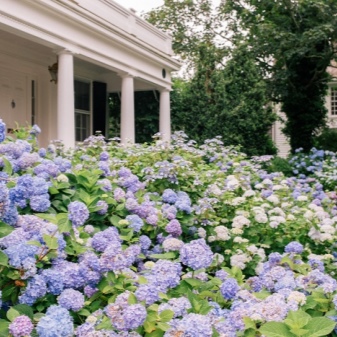
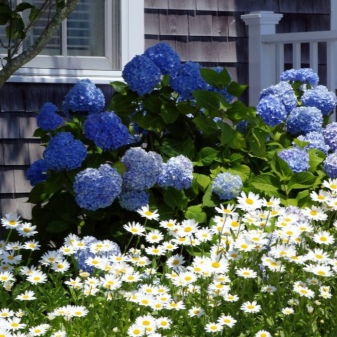
- To create a Japanese garden, hydrangeas should be planted among ferns and rhododendrons along a stream.

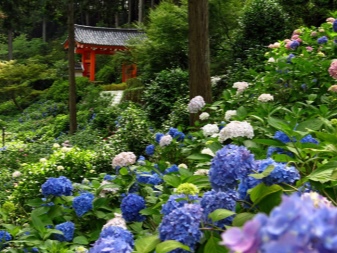
- A blue beauty planted with individual shrubs on a flat green lawn will look beautiful and unobtrusive.
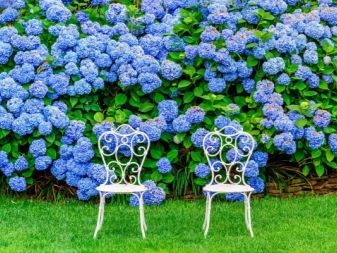
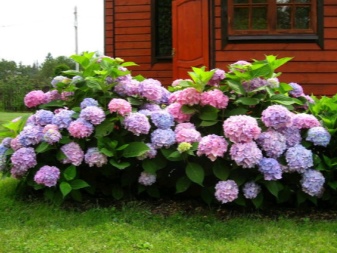
- An excellent decoration for the entrance to a house or a homestead will be a hydrangea placed in large pots or small round flower beds. You can plant it as a hedge to divide the territory on a personal plot.
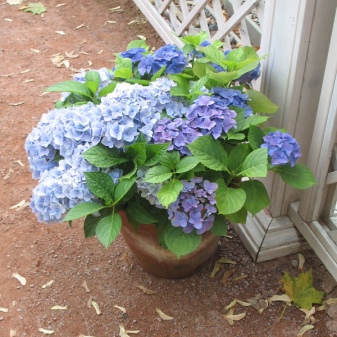
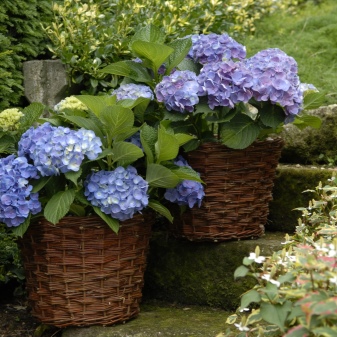
- For a bouquet can be used with ornamental grass.
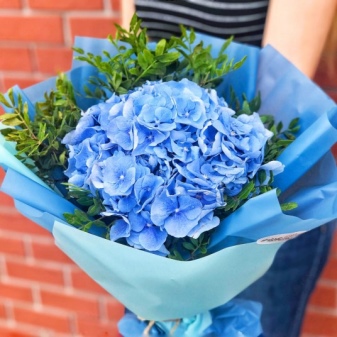
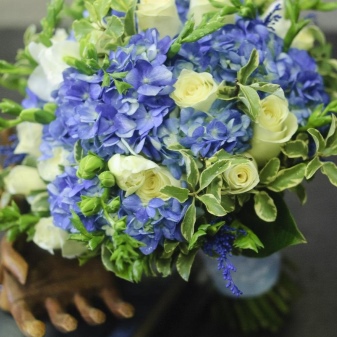
For information on how to grow a blue hydrangea, see the next video.



































































The comment was sent successfully.